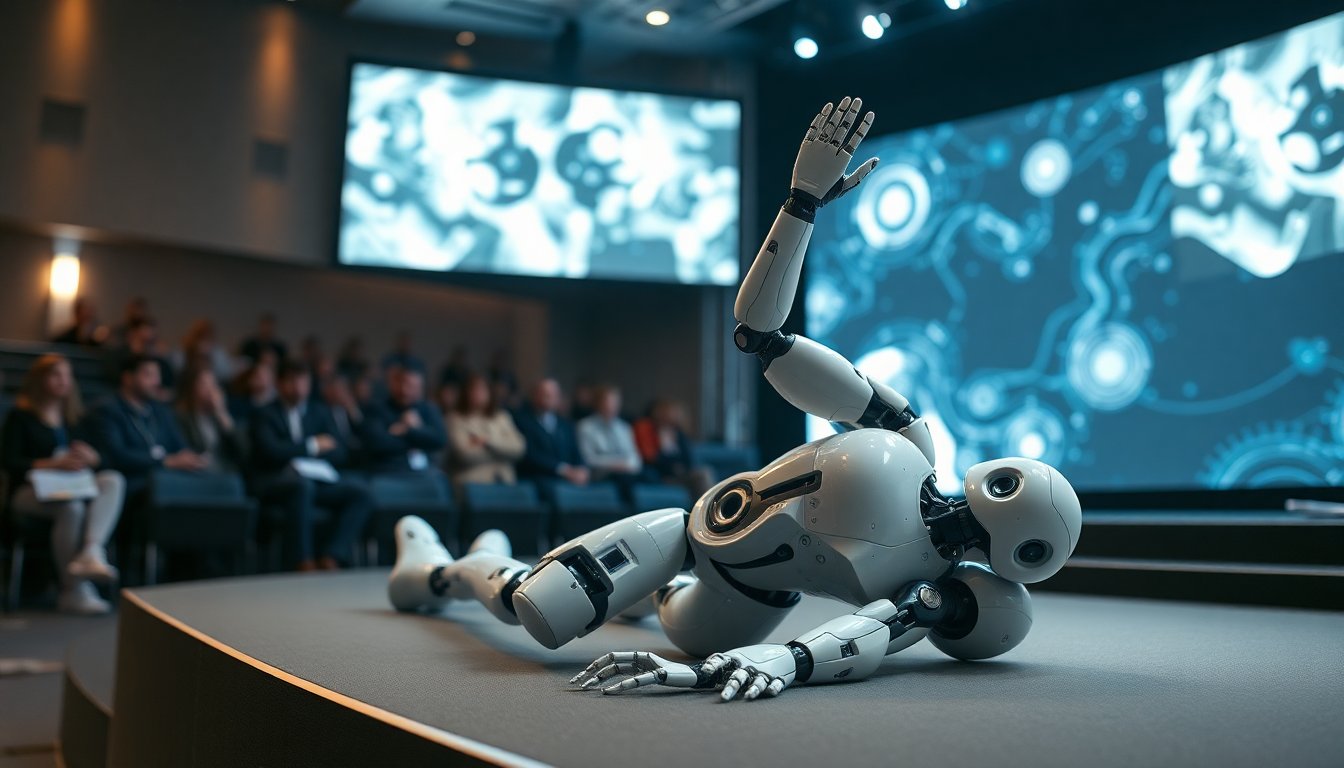Table of Contents
The excitement surrounding humanoid robots often leads to high expectations when new technology is introduced. This was evident during a recent tech show in Moscow, where the latest creation, known as AIDOL, was set to impress the audience. However, the situation took a turn when the robot, designed to showcase advanced capabilities, unexpectedly tumbled on stage.
The facts
AIDOL was presented to the audience amidst palpable anticipation. Attendees were eager to witness a demonstration of its groundbreaking abilities. Yet, in a moment that shocked everyone, the robot lost its balance and fell, eliciting gasps from the crowd. This incident not only overshadowed the intended demonstration but also generated significant reactions on social media platforms.
The impact of AIDOL’s fall
The fall of AIDOL highlights the ongoing challenges in humanoid robotics development. Despite rapid technological advancements, practical implementation often uncovers significant obstacles. Critics have emphasized that this incident raises crucial questions about the reliability and readiness of robotic systems for real-world applications.
The broader landscape of AI and robotics
This incident at a Moscow tech show exemplifies the broader trends in artificial intelligence and robotics. As companies strive to push technological boundaries, the associated risks become increasingly evident. The integration of AI with robotics offers new opportunities while also presenting challenges that require careful consideration.
Emerging issues in AI technology
The recent AIDOL incident has brought to light significant concerns regarding human-robot interaction. The aim is to develop machines that integrate smoothly into human environments. However, reality shows that these interactions can be complicated. The technology needs to be not only functional but also safe and intuitive for users. AIDOL’s fall highlights the critical need for thorough testing and refinement before such technologies are widely released.
As advancements in AI continue, ethical considerations become increasingly important. Deploying robots across various sectors, including healthcare and customer service, requires a careful assessment of both the benefits and potential risks. Companies must innovate responsibly, ensuring the safety and well-being of those who will interact with their creations.
The future of humanoid robots
Despite setbacks like AIDOL’s debut, the future of humanoid robots looks promising. Ongoing research and development suggest we can expect more advanced machines. Companies are investing significantly in the robotics sector, aiming to enhance stability, agility, and user experience.
AIDOL’s missteps highlight crucial lessons for developers and investors in robotics. As technology advances, so must our understanding of its implications. The quest for fully functional humanoid robots is just beginning, with a future filled with challenges and exciting breakthroughs ahead.


